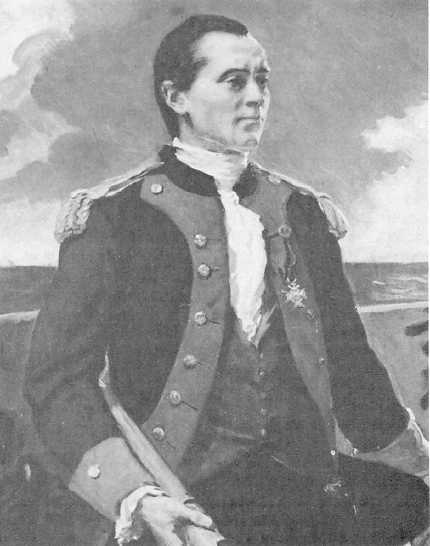| |
subsurface craft before finally completing it in 1775.
Bushnell, a Yale medical student, hoped the craft
would help drive the British away from American
shores for good.
Bushnell described this first warfare submarine
(fig. 2-l), named the Turtle, as having “some
resemblance to two upper tortoise shells of equal size,
joined together. . . . ” It was 7.5 feet deep and, under
ideal conditions, had a maximum speed of 3 knots. A
single operator could stay submerged in the craft for
30 minutes.
The Turtle was armed with an oak casing filled
with 150 pounds of explosives. This charge could be
attached to the bottom of an enemy ship where it
would remain until detonated by a simple clockwork
mechanism.
After completing the submarine, Bushnell took it
for several dives to prove its seaworthiness. Finally,
on 6 September 1776, he was ready to use it against
the British in New York harbor. Sergeant Ezra Lee, a
volunteer from the Connecticut militia, maneuvered
the Turtle by using hand-operated screw propellers.
The plan was for Sergeant Lee to use screws to attach
a time-fuse charge of gunpowder to a ship’s hull. The
mission was aborted when the auger could not
penetrate the copper sheathing on the hull of Admiral
Howe’s flagship, the HMS Eagle.
Bushnell made a couple of more attempts to use
the Turtle against the British in the Delaware River.
These times he tried attaching mines to the Turtle
and floating them against the enemy ships. These
attempts failed, and the British finally sunk the
submarine in New York harbor (the first recorded
instance of an antisubmarine attack).
JOHN PAUL JONES
Emerging from the revolutionary war was one of
the Navy’s greatest heroes and tradition makers,
John Paul Jones (fig. 2-2). Jones
134.4
Figure 2-2.-John Paul Jones, father of our highest naval traditions, represents the seaman,
leader, officer, and gentleman at their best.
2-3
|

